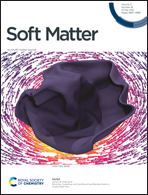A pair of particles in inertial microfluidics: effect of shape, softness, and position†
Abstract
Lab-on-a-chip devices based on inertial microfluidics have emerged as a promising technique to manipulate particles in a precise way. Inertial microfluidics exploits internal hydrodynamic forces and the mechanical structure of particles to achieve separation and focusing. The article focuses on the hydrodynamic interaction of two particles. This will help to develop an understanding of the dynamics of particle trains in inertial microfluidics, which are typical structures in multi-particle systems. We perform three-dimensional lattice Boltzmann simulations combined with the immersed boundary method to unravel the dynamics of various mono- and bi-dispersed pairs in inertial microfluidics. We study the influence of different starting positions for mono- and bi-dispersed pairs. We also change their deformability from relatively soft to rigid and choose spherical and biconcave particle shapes. The observed two-particle motions in the present work can be categorized into four types: stable pair, stable pair with damped oscillations, stable pair with bounded oscillations, and unstable pair. We show that stable pairs become unstable when increasing the particle stiffness. Furthermore, a pair with both capsules in the same channel half is more prone to become unstable than a pair with capsules in opposite channel halves.



 Please wait while we load your content...
Please wait while we load your content...